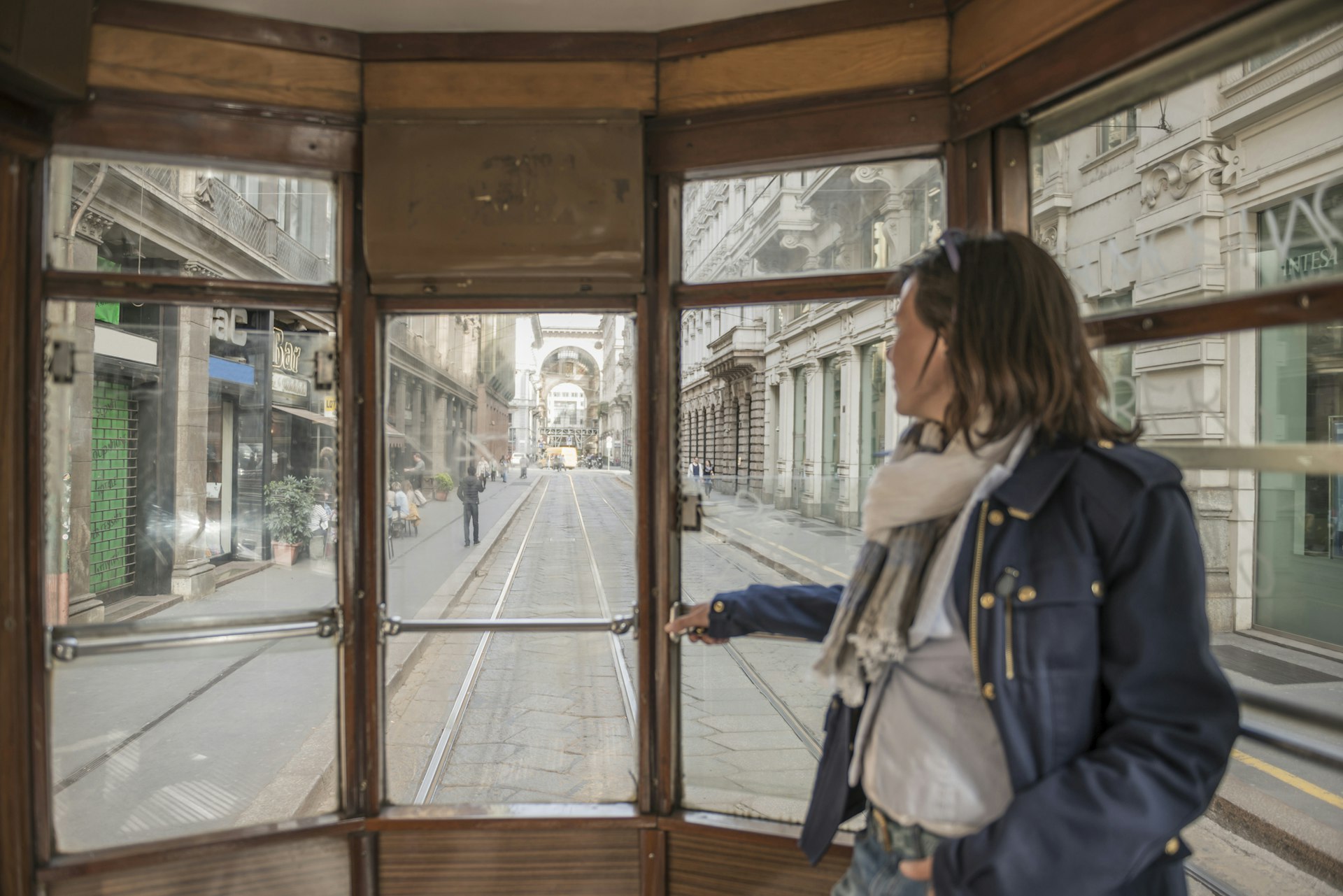As Milan is one of the busiest cities in Italy, it should be no surprise that its traffic can be terrible to navigate. It bustles from early morning to late at night — and that’s without mentioning the lack of parking or the many areas where there is limited traffic allowed.
This is exactly why we recommend leaving your car behind when visiting Milan and opting instead for the city’s reliable public transport. From the metro to trams to bike-sharing services, here’s what you need to know about moving around the city of the Madonnina.

The Metro
Known as the metro (short for metropolitana), the subway is one of the easiest ways to move around Milan and is used daily by locals, commuters and tourists alike, with service starting at around six in the morning and ending at around midnight. It currently has four lines (with the fifth one in construction) and it also reaches beyond Milan proper into the city’s suburbs. A single ticket is €2, but you can buy a 24-hour ticket for €7, a three-day ticket for €12 and a 10-trips pack for €18.
Passante Railway
Built following the example of S-Bahn trains in Germany, the Passante railway runs underground through the city and its suburbs. It’s a fast and efficient way to move around Milan’s most strategic points, like railway and metro stations — it doesn’t have the same capacity as the metro, but it’s fast and efficient just the same. Tickets cost the same as those for the metro.

Trams
Trams are Milan staples and they contribute not only to the city's infrastructure but also to its iconic image and cityscape with their very recognizable yellow color and distinctive noise. There are a total of eighteen lines operating within the Milan city limits, and service runs from around 4am to 2am the following day. Tickets cost the usual €2 – just like the metro and the Passante – and they can be bought on the Milanese Transport Agency’s official website or app, as well as at tabaccherie and newsagents around the city.
Bus and Filobus
Milan has both buses and filobuses lines that make up a grand total of around a hundred lines that offer a truly complete service for all urban areas of the city. They run from around 5am to half past midnight (except on holidays like Christmas Day and May Day), and tickets are the same as all other urban transportation services.
Walking
Walking is a great way of exploring the city and catching those little corners and quirky sights you might otherwise miss by just sticking to the most famous landmarks. While it is entirely possible to stick to walking if you feel like your legs are up for it, one good solution is moving from neighborhood to neighborhood with public transport and then letting your feet take you on an adventure.

Taxi
Taxis in Milan are easily recognizable by their white color, and they can be hailed from specifically designated areas or by ordering one via call or app. The starting fare is €3.40 on weekdays and €5.60 on weekends, while the night fare starts at €6.70. There are also fixed fares for major destinations (such as airports) and the possibility of splitting the fare between a maximum of three people all going from the same starting point to the same destination.
Sharing services
An alternative to both bringing your own means of transportation and "traditional" public transport is a sharing service, whether it's a car (Milan actually has the most extensive car sharing service in the whole of Italy), a bike or a scooter. While some are cheaper than others, they all follow the same principle — you pick up your car, bike or scooter at the location closest to you and drop it off at your destination, paying for the time you have used it and avoiding the hassle of finding a parking spot.

Accessible transportation in Milan
When it comes to accessible travel, Milan is pretty much a mixed bag. Some lines and areas have prioritised accessibility and ensure smooth transit for everyone, while others, especially if they’re older, still need some major improvements.
When it comes to the subway system both Line 3 (M3) and Line 5 (M5), the two most recent ones, are equipped with elevators, tactile floor markings and panels, and accessible restrooms. As for Line 1 (M1) and Line 2 (M2), it varies from station to station and accessibility is sadly not always guaranteed.
The same goes for trams, buses and filobuses. Most stops are equipped with tactile floor markings but not all of them, especially if they’ve been built some years past and are due for a renovation. All bus lines have a ramp for wheelchair users, but only some trams and filobuses have one on board.
More detailed information and guidelines are available on Milan’s official website.
You may also like:
Milan through the seasons: the best time to visit Italy's fashion capital
The 8 best day trips from Milan
The top 22 free things to do in Milan












